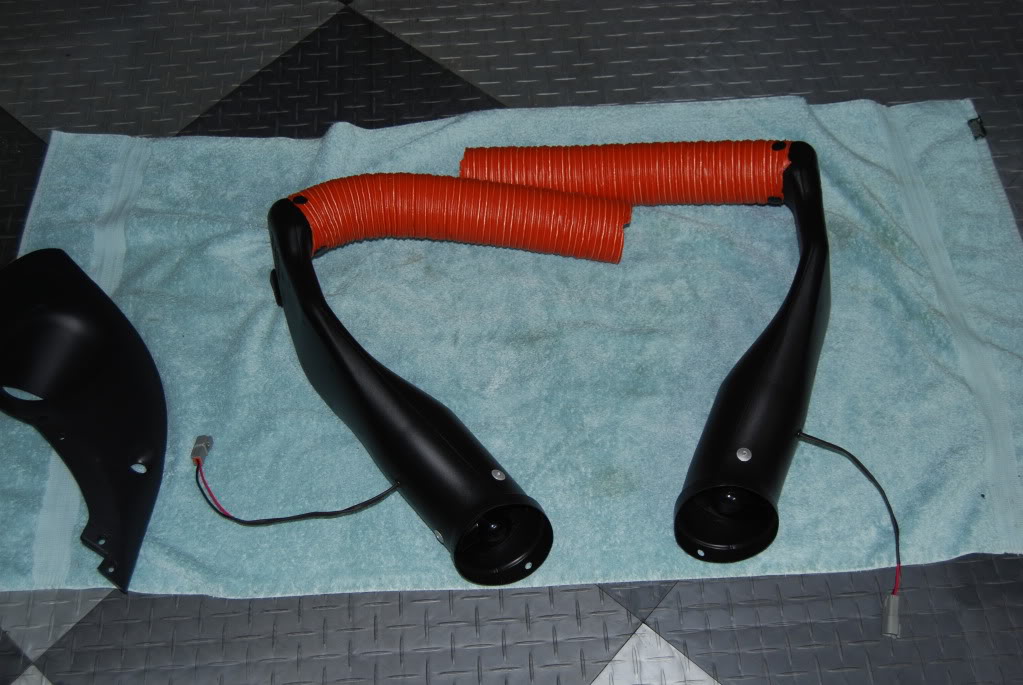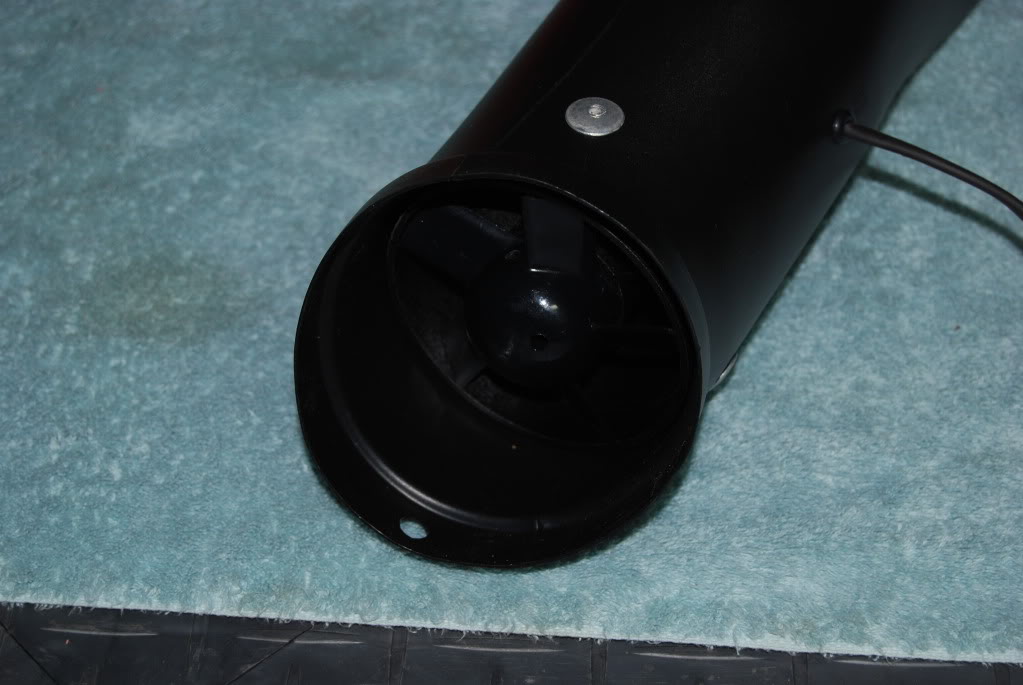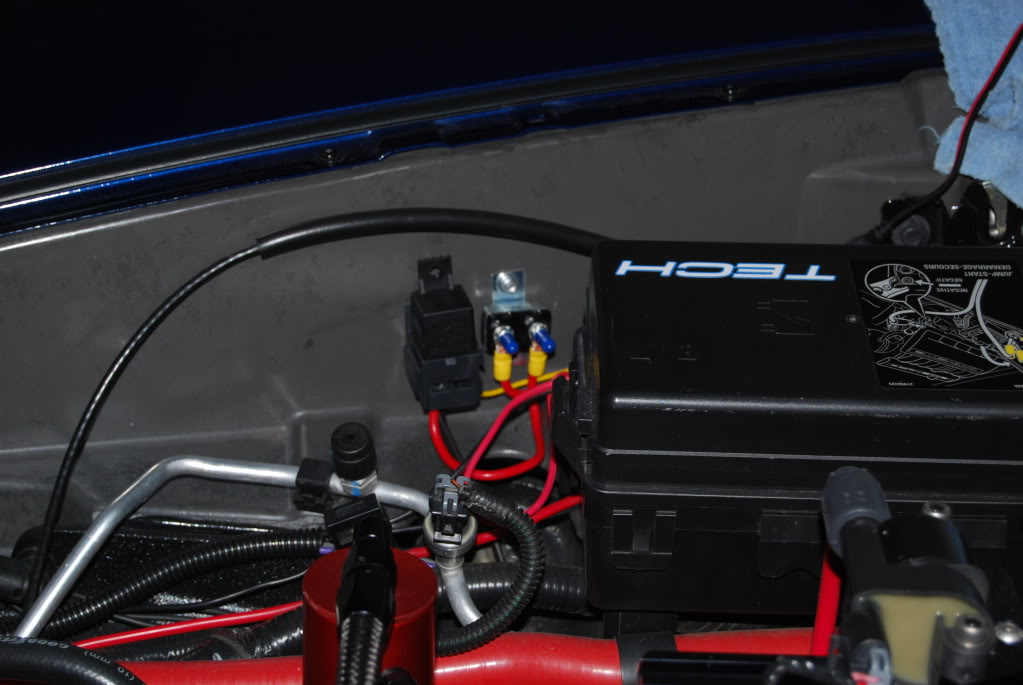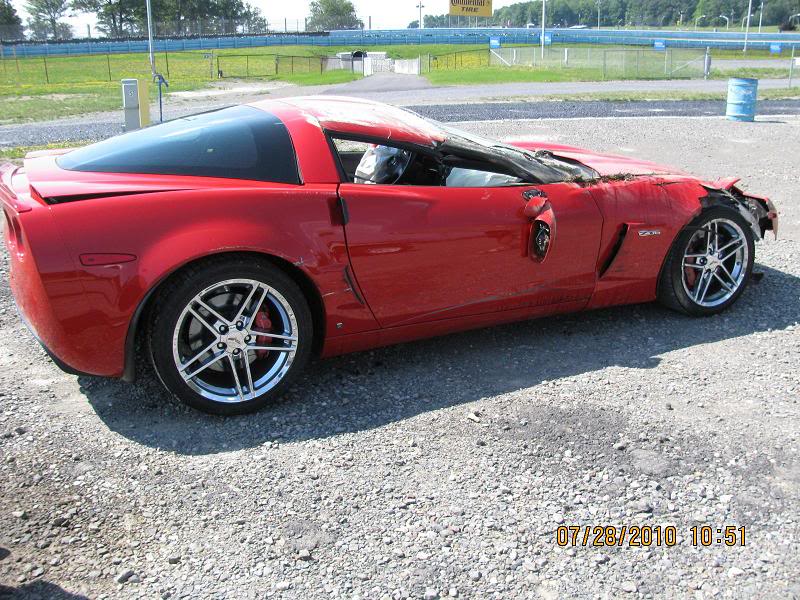[Z06] Z06 brake cooling options for track cars
#1
Drifting


Thread Starter
Stock C6/Z06 front brake cooling ducts are not very efficient at directing air to the front rotors. The rubber air dam below the front valence is there to direct some air into the ducts from below. They do not work well.
We have mounted a pressure transducer in the left front duct and monitored the pressure differential at 150 mph on the back straight at Road Atlanta. Negligible! This is the same pressure transducer system used to measure airbox pressure on race bikes with ram air ducts in the front fairing.
In fact the ZR1 and all the carbon ceramic brake Z06's remove the rubber air dams and use a deflector on the lower suspension a-arm to direct air to the front rotors. Works well at speed.

Katech has a very nice setup with the ZR1 front splitter, brake duct scoops, and a undertray to seal everything up. Works well at speed.


A different approach borrowed from the NASCAR short track cars is cooling fans in the stock ducts. Advantage is positive air flow to the rotors at low speeds and while driving through the pits. Testing as shown reduction in front rotor temps by as much as 200F after a 20 minute track session.
How to:
Small high efficiency custom fans from a supplier to NASCAR teams.

Mounted in the ducts with rivets.


A relay mounted next to the fuse box with a circuit breaker to control the fans.

A short VIDEO of the fans in action: http://s58.photobucket.com/albums/g2...t=VID00254.mp4

We have mounted a pressure transducer in the left front duct and monitored the pressure differential at 150 mph on the back straight at Road Atlanta. Negligible! This is the same pressure transducer system used to measure airbox pressure on race bikes with ram air ducts in the front fairing.
In fact the ZR1 and all the carbon ceramic brake Z06's remove the rubber air dams and use a deflector on the lower suspension a-arm to direct air to the front rotors. Works well at speed.

Katech has a very nice setup with the ZR1 front splitter, brake duct scoops, and a undertray to seal everything up. Works well at speed.


A different approach borrowed from the NASCAR short track cars is cooling fans in the stock ducts. Advantage is positive air flow to the rotors at low speeds and while driving through the pits. Testing as shown reduction in front rotor temps by as much as 200F after a 20 minute track session.
How to:
Small high efficiency custom fans from a supplier to NASCAR teams.

Mounted in the ducts with rivets.


A relay mounted next to the fuse box with a circuit breaker to control the fans.

A short VIDEO of the fans in action: http://s58.photobucket.com/albums/g2...t=VID00254.mp4

Last edited by wstaab; 03-14-2011 at 11:53 PM.
#2
Tech Contributor
Member Since: Oct 1999
Location: Charlotte, NC (formerly Endicott, NY)
Posts: 40,094
Received 8,928 Likes
on
5,333 Posts

Did you check air flow/velocity through the ducts? Air pressure might not be all that high with good air flow. The better the flow the lower the pressure.
I saw the same type of ducting setup that is on the C6 on several C4 race cars years ago. It seemed to work well and got more air to the brakes than ducts mounted to the spoiler.
Bill
I saw the same type of ducting setup that is on the C6 on several C4 race cars years ago. It seemed to work well and got more air to the brakes than ducts mounted to the spoiler.
Bill
#4
Instructor


Member Since: Aug 2009
Location: Austin The great nation of TEXAS
Posts: 190
Likes: 0
Received 1 Like
on
1 Post

I agree with Bill. Pressure will reduce with increased airflow. Bernoulli's Law. It's why airplanes fly. Motorcycle airboxes are a closed system metered by however much air the engine is using. Different situation entirely.
Close off the outlet of the duct and THEN read the pressure.
Close off the outlet of the duct and THEN read the pressure.
#5
Drifting


Thread Starter
The theorem of Bernoulli's principle that applies in this situation is not an airfoil but the venturi effect. The Z06/ZR1 brake ducts are a modified venturi. They have a large round opening transitioning into a smaller oblong cross section transitioning into a smaller round opening.
The device I use can measure a pressure differential of 0.001 bar/0.1 kPa positive or negative relative to ambient atmospheric pressure using a static port. The measurement point was at the point the plastic duct connects to the flexible duct. If there was increased airflow there would be a pressure drop. If airflow was being restricted due to the spindle ducts position relative to the brake rotor you would see a pressure increase. In my testing the measured data in the duct was small, less than .1 millibar. Note this car used an aftermarket splitter and had a lower ride height then stock. The front splitter would actually touch the ground braking for turn 10 at Road Atlanta. Results may not be the same for a car with the OEM front splitter and standard ride height.
The fans in the duct work. They reduce brake rotor surface temps as much as 200F on a 90F ambient day. For one session the driver forgot to turn the fans on and the brake rotor temps were in the same range as a car with no fans. One of the concerns was if the fans quit working would they restrict airflow enough to cause elevated temps due to their location in the ducts. That was the motivation for the testing.
Your results may be different.
The device I use can measure a pressure differential of 0.001 bar/0.1 kPa positive or negative relative to ambient atmospheric pressure using a static port. The measurement point was at the point the plastic duct connects to the flexible duct. If there was increased airflow there would be a pressure drop. If airflow was being restricted due to the spindle ducts position relative to the brake rotor you would see a pressure increase. In my testing the measured data in the duct was small, less than .1 millibar. Note this car used an aftermarket splitter and had a lower ride height then stock. The front splitter would actually touch the ground braking for turn 10 at Road Atlanta. Results may not be the same for a car with the OEM front splitter and standard ride height.
The fans in the duct work. They reduce brake rotor surface temps as much as 200F on a 90F ambient day. For one session the driver forgot to turn the fans on and the brake rotor temps were in the same range as a car with no fans. One of the concerns was if the fans quit working would they restrict airflow enough to cause elevated temps due to their location in the ducts. That was the motivation for the testing.
Your results may be different.
#6
Team Owner


http://www.suzukaracing.com/1%20Blower.html
in the article
in the article
Restrict flow?
If the car goes faster than the airpeed of a blower produces, does the blower blade become the restriction of flow?
The answer is no.
We have confirmed by testing that they do not make any difference.
If the car goes faster than the airpeed of a blower produces, does the blower blade become the restriction of flow?
The answer is no.
We have confirmed by testing that they do not make any difference.
#8
Instructor


According to this article brake fans can obstruct airflow if not installed correctly.
http://www.stockcarracing.com/techar...rol/index.html
http://www.nascar.com/2002/kyn/tech/...rakes_cooling/
http://www.stockcarracing.com/techar...rol/index.html
http://www.nascar.com/2002/kyn/tech/...rakes_cooling/
#9
Team Owner


According to this article brake fans can obstruct airflow if not installed correctly.
http://www.stockcarracing.com/techar...rol/index.html
http://www.nascar.com/2002/kyn/tech/...rakes_cooling/
http://www.stockcarracing.com/techar...rol/index.html
http://www.nascar.com/2002/kyn/tech/...rakes_cooling/
if not installed correctly
that is key in anything.
Inline electrical cooling fans that were once used on aircraft brakes are now being incorporated onto NASCAR Winston Cup Series cars and NASCAR Craftsman Truck Series trucks. The fans are designed to mechanically pull in air at tracks where speeds do not force enough air into the ducts for proper cooling.
"On the very slow tracks it is possible to improve cooling with fans," explained Laise. "But, in cases with bigger tracks, where the air is being rammed into the scoops at a high velocity, the fan can act as a restriction."
In any given season, NASCAR races take place at a variety of tracks that have different requirements for braking performance. At some tracks the brakes will only be used to avoid accidents and to slow for the pits. On other tracks with tight turns requiring heavy braking, the rotors will glow bright orange with temperatures as high as 1,400 degrees Fahrenheit.
"On the very slow tracks it is possible to improve cooling with fans," explained Laise. "But, in cases with bigger tracks, where the air is being rammed into the scoops at a high velocity, the fan can act as a restriction."
In any given season, NASCAR races take place at a variety of tracks that have different requirements for braking performance. At some tracks the brakes will only be used to avoid accidents and to slow for the pits. On other tracks with tight turns requiring heavy braking, the rotors will glow bright orange with temperatures as high as 1,400 degrees Fahrenheit.
Last edited by John Shiels; 03-24-2011 at 08:31 PM.
#10
Tech Contributor
Member Since: Oct 1999
Location: Charlotte, NC (formerly Endicott, NY)
Posts: 40,094
Received 8,928 Likes
on
5,333 Posts

if not installed correctly
that is key in anything.
How many here are running at high speed tracks like NASCAR does? Even a fast track like Pocono Long Course your average speed is way below high speed NASCAR tracks which will be probably well over 150 mph and near 200 average on others. Most cars at HPDE or SCCA racing don't see over 170 on the ed of the fastest tracks for a short time period. The fans I linked to used in NASCAR I think would be good on all the types non-pro Corvette run on.
that is key in anything.
How many here are running at high speed tracks like NASCAR does? Even a fast track like Pocono Long Course your average speed is way below high speed NASCAR tracks which will be probably well over 150 mph and near 200 average on others. Most cars at HPDE or SCCA racing don't see over 170 on the ed of the fastest tracks for a short time period. The fans I linked to used in NASCAR I think would be good on all the types non-pro Corvette run on.
From the article:
Spencer cautions, however, that you can harm your overall brake cooling system if you don't install these fans strategically. "Those fans are powered by an electric motor and spin at a constant speed," he explains. "Usually, they move air at about 35 mph. Going down the straights, you can get much more flow than the fans will allow through your ducts, and the fans will actually cause the air to back up and not allow it to get to the rotor. You can keep this from happening by not installing the fans in line with the duct that leads the inlet air to the rotor. Instead, install it in its own path and have the duct from the fan "Y" into the main line. This way you get the best of both worlds."
As for the speeds we see on the track you know better than most we see some high speeds
 . At WGI there are many sections where the speed is above 100 mph with the lowest speeds being around 60 at the apex of several turns. There are even turns where the speeds are above 100. Slowing from 150 to 160 to enter the bus stop between 80 and 90 and then carrying 90 plus around the carousel into the chute going to turn 6 where speeds get to 110 and then the downhill braking zone to get down to around 60 for turn 6. You can lose your brakes at the end of the back straight but if you lose them going into 6 because you just severely heated them going into the bus stop then you get this result:
. At WGI there are many sections where the speed is above 100 mph with the lowest speeds being around 60 at the apex of several turns. There are even turns where the speeds are above 100. Slowing from 150 to 160 to enter the bus stop between 80 and 90 and then carrying 90 plus around the carousel into the chute going to turn 6 where speeds get to 110 and then the downhill braking zone to get down to around 60 for turn 6. You can lose your brakes at the end of the back straight but if you lose them going into 6 because you just severely heated them going into the bus stop then you get this result: 
This happened right in front of my students car last July. The instructor in this car thought his student lost the brakes going into 6.
Bill
#11
Instructor


How many here are running at high speed tracks like NASCAR does? Even a fast track like Pocono Long Course your average speed is way below high speed NASCAR tracks which will be probably well over 150 mph and near 200 average on others. Most cars at HPDE or SCCA racing don't see over 170 on the ed of the fastest tracks for a short time period.
Average speeds for a Z06 at Road America would be greater than 100 mph.
The air fans are probably best when racing and coming in for a pit stop when installed in the y configuration.
#12
but you are only avg 96 mph...tell your 1400 degree front rotors you're only avg 96 mph
Last edited by Gary2KC5; 03-24-2011 at 11:01 PM.
#13
Tech Contributor
Member Since: Oct 1999
Location: Charlotte, NC (formerly Endicott, NY)
Posts: 40,094
Received 8,928 Likes
on
5,333 Posts

Bill
#14
Instructor


The phrase "avg speeds" should not be in this discussion...say you do a 2:30 lap @ RA...you avg 96 mph but you brake in T1 from 165 mph to 70 then in T5 you brake from 165 to 45, then in T8 you brake from 110 to 45 then in T12 you brake from 140 to 70...
but you are only avg 96 mph...tell your 1400 degree front rotors you're only avg 96 mph
but you are only avg 96 mph...tell your 1400 degree front rotors you're only avg 96 mph
#15
Team Owner


John, the correct installation mentioned in the articles referenced is to use a Y duct so the fan isn't directly in the path of air coming in from the front of the vehicle. That way the fan doesn't block the air flow. The article also mentions the 35 mph air flow speed that I mentioned in the other thread. Nothing wrong with using a fan just need to know its limitations and where to mount.
From the article:
Spencer cautions, however, that you can harm your overall brake cooling system if you don't install these fans strategically. "Those fans are powered by an electric motor and spin at a constant speed," he explains. "Usually, they move air at about 35 mph. Going down the straights, you can get much more flow than the fans will allow through your ducts, and the fans will actually cause the air to back up and not allow it to get to the rotor. You can keep this from happening by not installing the fans in line with the duct that leads the inlet air to the rotor. Instead, install it in its own path and have the duct from the fan "Y" into the main line. This way you get the best of both worlds."
As for the speeds we see on the track you know better than most we see some high speeds . At WGI there are many sections where the speed is above 100 mph with the lowest speeds being around 60 at the apex of several turns. There are even turns where the speeds are above 100. Slowing from 150 to 160 to enter the bus stop between 80 and 90 and then carrying 90 plus around the carousel into the chute going to turn 6 where speeds get to 110 and then the downhill braking zone to get down to around 60 for turn 6. You can lose your brakes at the end of the back straight but if you lose them going into 6 because you just severely heated them going into the bus stop then you get this result:
. At WGI there are many sections where the speed is above 100 mph with the lowest speeds being around 60 at the apex of several turns. There are even turns where the speeds are above 100. Slowing from 150 to 160 to enter the bus stop between 80 and 90 and then carrying 90 plus around the carousel into the chute going to turn 6 where speeds get to 110 and then the downhill braking zone to get down to around 60 for turn 6. You can lose your brakes at the end of the back straight but if you lose them going into 6 because you just severely heated them going into the bus stop then you get this result:
This happened right in front of my students car last July. The instructor in this car thought his student lost the brakes going into 6.
Bill
From the article:
Spencer cautions, however, that you can harm your overall brake cooling system if you don't install these fans strategically. "Those fans are powered by an electric motor and spin at a constant speed," he explains. "Usually, they move air at about 35 mph. Going down the straights, you can get much more flow than the fans will allow through your ducts, and the fans will actually cause the air to back up and not allow it to get to the rotor. You can keep this from happening by not installing the fans in line with the duct that leads the inlet air to the rotor. Instead, install it in its own path and have the duct from the fan "Y" into the main line. This way you get the best of both worlds."
As for the speeds we see on the track you know better than most we see some high speeds
 . At WGI there are many sections where the speed is above 100 mph with the lowest speeds being around 60 at the apex of several turns. There are even turns where the speeds are above 100. Slowing from 150 to 160 to enter the bus stop between 80 and 90 and then carrying 90 plus around the carousel into the chute going to turn 6 where speeds get to 110 and then the downhill braking zone to get down to around 60 for turn 6. You can lose your brakes at the end of the back straight but if you lose them going into 6 because you just severely heated them going into the bus stop then you get this result:
. At WGI there are many sections where the speed is above 100 mph with the lowest speeds being around 60 at the apex of several turns. There are even turns where the speeds are above 100. Slowing from 150 to 160 to enter the bus stop between 80 and 90 and then carrying 90 plus around the carousel into the chute going to turn 6 where speeds get to 110 and then the downhill braking zone to get down to around 60 for turn 6. You can lose your brakes at the end of the back straight but if you lose them going into 6 because you just severely heated them going into the bus stop then you get this result: This happened right in front of my students car last July. The instructor in this car thought his student lost the brakes going into 6.
Bill
thanks Bill







